Cyprus is situated in the eastern Mediterranean Sea, less than 100 miles from both Turkey and Syria and about 500 miles southeast of mainland Greece. It is the third largest Mediterranean island after Sicily and Sardinia. When I lived in the UK it was a popular destination for both tourists and retirees from Britain, with its warm Mediterranean climate and relaxed atmosphere. I returned to Cyprus recently for the first time since moving to Australia four decades ago. I visited the coastal city of Paphos, which is in the southwest of the country.

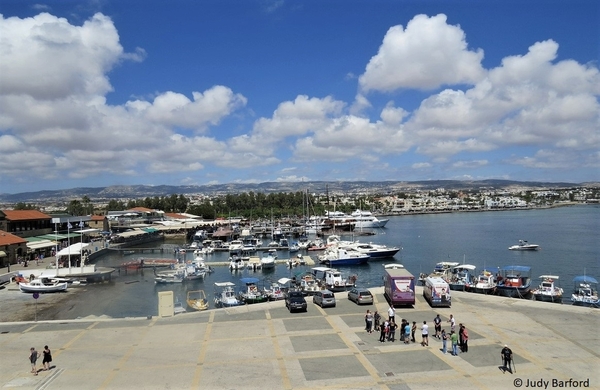
On arriving in Paphos (or Pafos) you could be forgiven for thinking you'd stumbled on some far-flung corner of England. There are British accents everywhere and they’re not coming from the tourists, they’re coming from many of the people running the place. You’ll find them on the waterfront spruiking the delights of various tours, in the restaurants and bars and even operating the hop on-hop off bus service.
All of this changed in 2012-13 when Cyprus suffered its own financial crisis not long after the GFC, throwing the island nation into turmoil. Austerity measures caused a downturn in tourism and created a precarious position for expatriate residents.
But miraculously within five years the national bank had repaid its debts in full and regained the trust of its customers. Everything seemed back to normal when I was there and there was certainly no shortage of tourists. In fact, at peak holiday times tourists sometimes outnumber residents, a problem of excess shared by many similar destinations and one which has never been solved.
Now, expats who were once tourists themselves bemoan the fact that hordes of visitors are trampling all over “their” island. The irony, of course, is that these destinations are heavily dependent on tourism for the major contribution it makes to their economies.
Legend has it that the goddess Aphrodite was born in Cyprus and that Paphos was the name of Aphrodite and Pygmalion’s mythological daughter. But as classical history buffs will know, there’s a lot more to this story and it’s way beyond the scope of this blog.
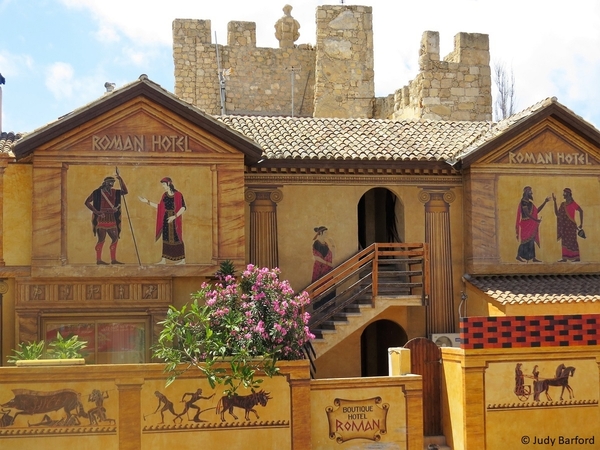
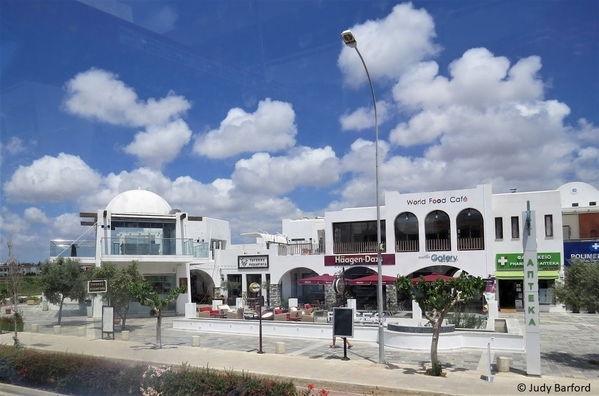
The greater Paphos area is divided into two levels: Kato Paphos, which is a predominantly tourist area facing the sea and which also contains the archaeological sites; and Ktima Paphos which is the old town and where the regular shops and the town’s infrastructure are located.
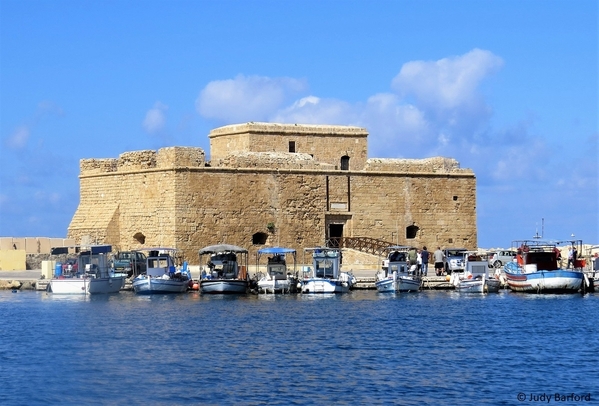
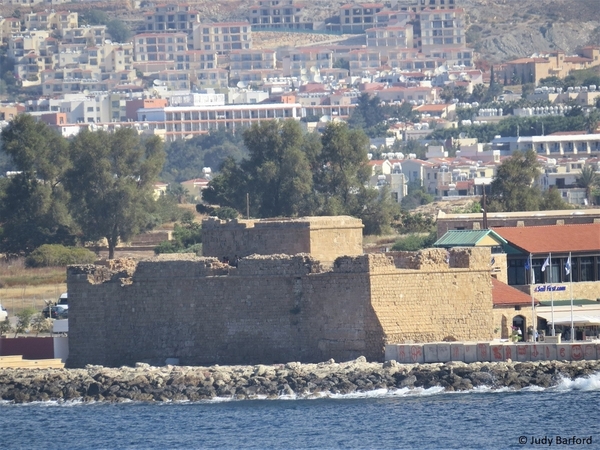
The most prominent landmark on the waterfront is Paphos Castle (above), originally a Byzantine fort built to protect the harbour. UNESCO has included the entire archaeological area of Paphos on its World Cultural Heritage list and you shouldn’t miss the beautiful mosaics in the museums and restored Roman villas.
The mosaic pavements of the House of Dionysus, and the surrounding mosaic houses, are among the finest to be found in the Mediterranean and are the top tourist attraction in Paphos. They are part of the larger Paphos Archaeological Park, which spans the western side of the harbour.

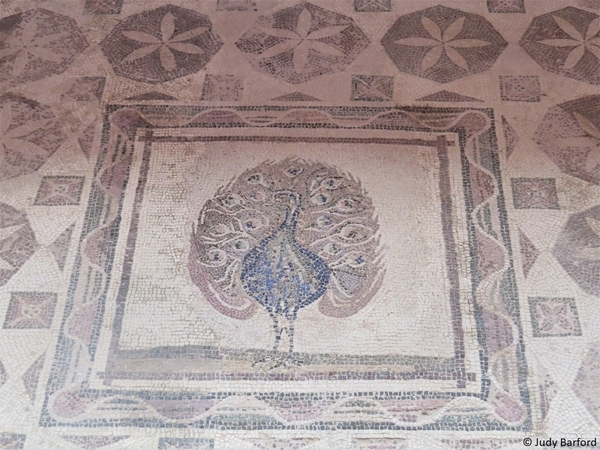
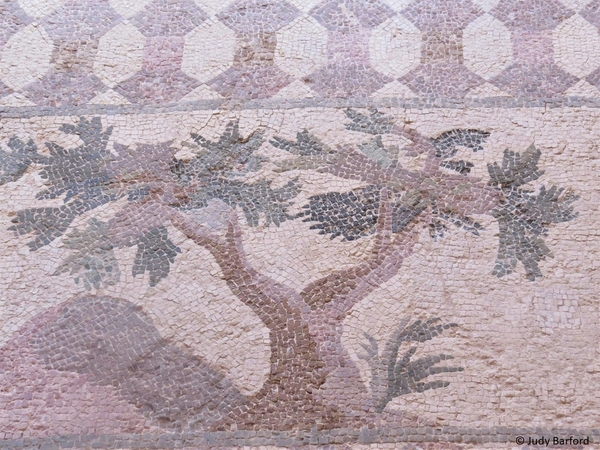
Apparently, they were discovered accidentally by a farmer ploughing his fields, and the mosaic artwork here is very well preserved, depicting scenes from Greek mythology in vibrant natural limestone colours.
Although the mosaics of the Paphos Archaeological Park are the most popular places to visit, this area also contains the remnants of an Odeon, Agora and Asklepion (healing temple) from the town's Roman period.

The Odeon (a small theatre) is still used today for summer music festivals and has 12 rows of seating. In front is the large court (95 square metres) of the Agora, which functioned as a Roman marketplace with only the foundations and parts of the columns visible.
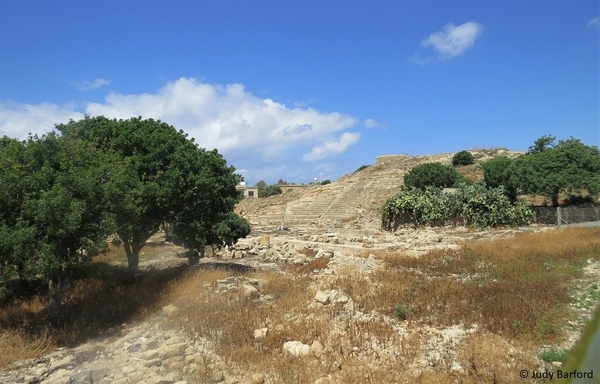
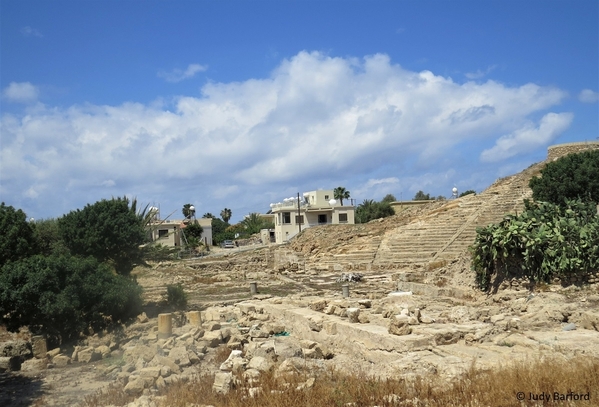
Nearby are the crumbled remains of ancient city walls. Keep walking for about two kilometres and you’ll come to the rock-cut chambers of the Tombs of the Kings.
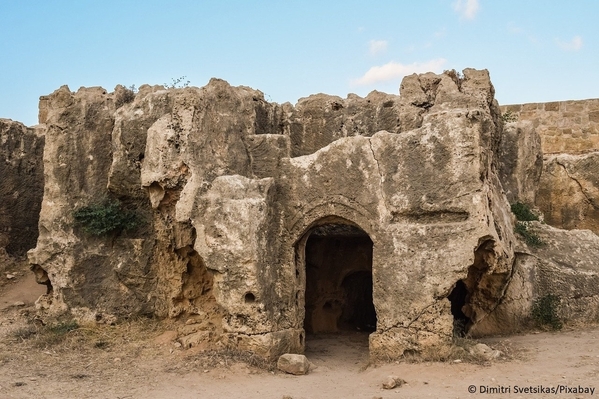
These impressive underground tombs date back to the 4th century BC and are carved out of solid rock, some decorated with Doric pillars and all revealing a distinctly Egyptian influence.
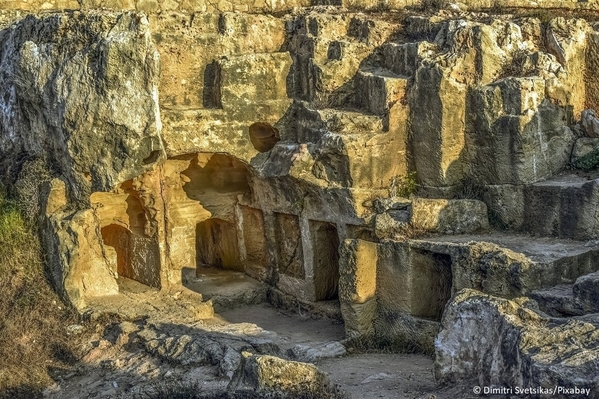
There are seven tombs to explore here, but tomb number three contains the most interesting architectural elements with a wealth of columns surrounding its atrium.

Heading back into town, there is a boardwalk that snakes along the waterfront for about five kilometres along the coastline of central Paphos. The southern section of the boardwalk stretches from Paphos Fort down to the Louis Phaethon Beach Resort. The trail passes by all the central Kato Paphos beaches along the way, with plenty of cafés offering sea views.
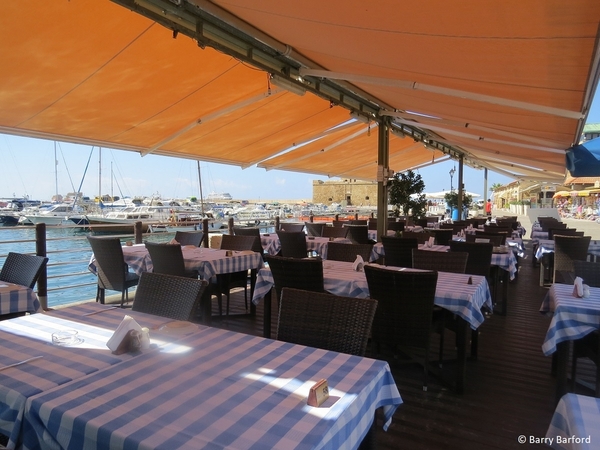
The more interesting section, though, is the northern half of the boardwalk, which heads from Paphos Harbour and its fort up to the Tombs of the Kings. The path skirts the Paphos Archaeological Park along its way north and offers coastal views over Lighthouse Beach.
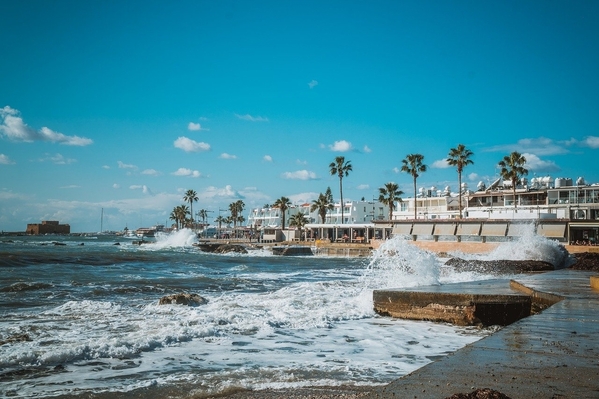
Formerly a crown colony of Britain since 1925, Cyprus became an independent republic in 1960. Operating a free-enterprise liberal economy based on agriculture, trade and tourism, Cyprus has achieved a standard of living higher than most of its neighbours, with the exception of Israel, and has a high-income economy as defined by the World Bank.
The long-standing conflict between the Greek Cypriot majority and the Turkish Cypriot minority led to an invasion of the island by Turkish troops in 1974. This partitioned the island and led to the establishment in 1975 of a de facto Turkish Cypriot state in the northern third of the country. The state made a unilateral declaration of independence in 1983 and adopted the name Turkish Republic of Northern Cyprus. However, the independence was recognized only by Turkey, and the north remains a disputed territory to this day.
There is nothing to stop visitors from travelling to both the south and north of the island, but it is illegal to enter the Republic of Cyprus via any airport or seaport in the north. Instead, enter at Paphos or Larnaca in southern Cyprus, both of which have international airports.
Crossing the border from south to north via the capital, Nicosia, is not a problem, especially if you are walking. If you have a vehicle you’ll need special insurance to continue driving in the so-called TRNC. This can be obtained at the border crossing. You can also hire a car in the south and drop it off at the rental car company's office in Nicosia, then be met by a taxi driver who will take you over the border so you can continue the rest of your holiday in the north. If you book an organised tour, all arrangements will be taken care of.
So long as you first enter the Republic in the south and proceed from south to north in the manner described, then re-entering the Republic from the north is permitted.
Paphos has an indefinable quality about it best described as calm, even when it is crowded and bustling. It is a destination I would recommend to anyone visiting the Mediterranean region.
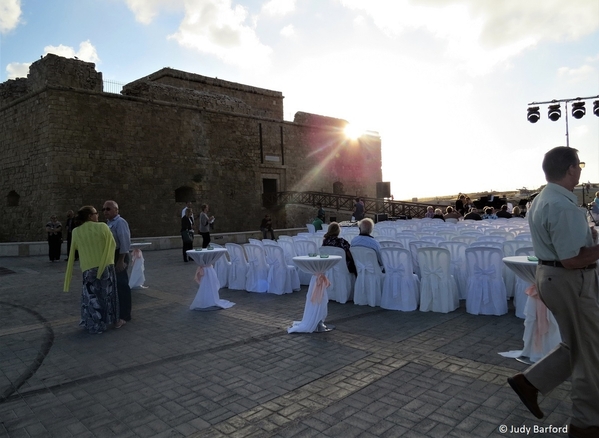
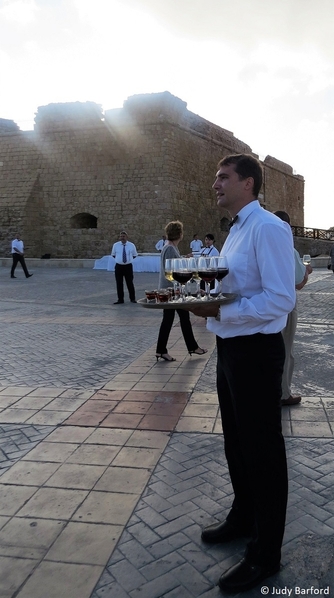
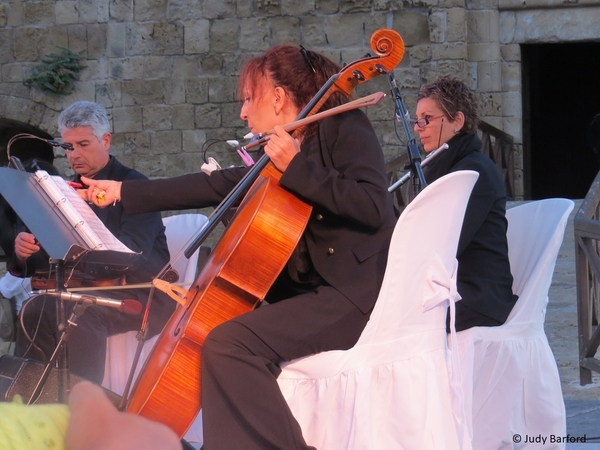 Above (4): Preparing for a concert on the waterfront.
Above (4): Preparing for a concert on the waterfront.
Cyprus currently operates a colour-coded entry system, designating countries as green, orange, red or grey depending on their COVID-19 status. However, regardless of your country’s colour, if you have been fully vaccinated neither PCR test nor quarantine is required. You do have to complete a Cyprus Flight Pass which can be done here. As always, things can change quickly so double-check before you travel.

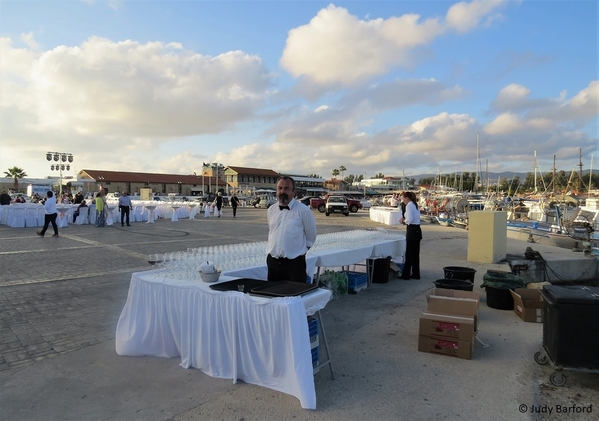

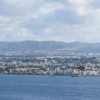



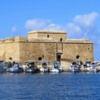

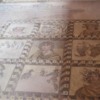


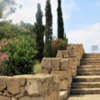


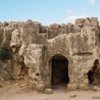








Comments (0)